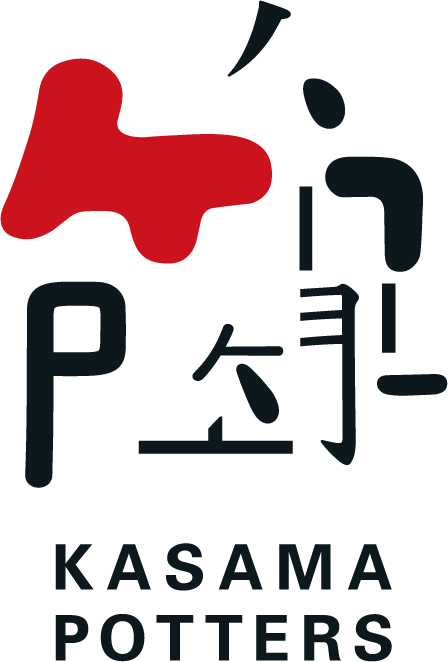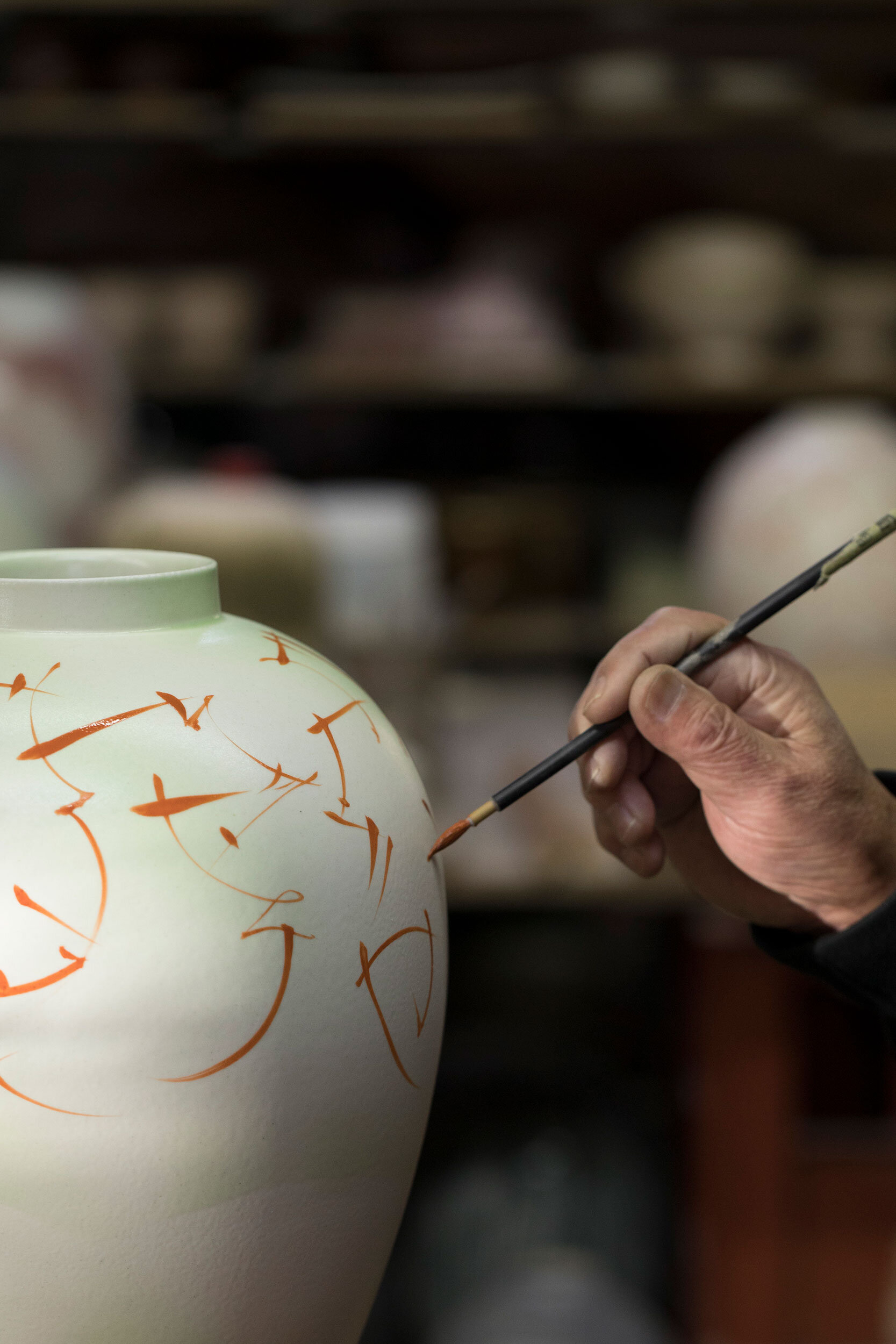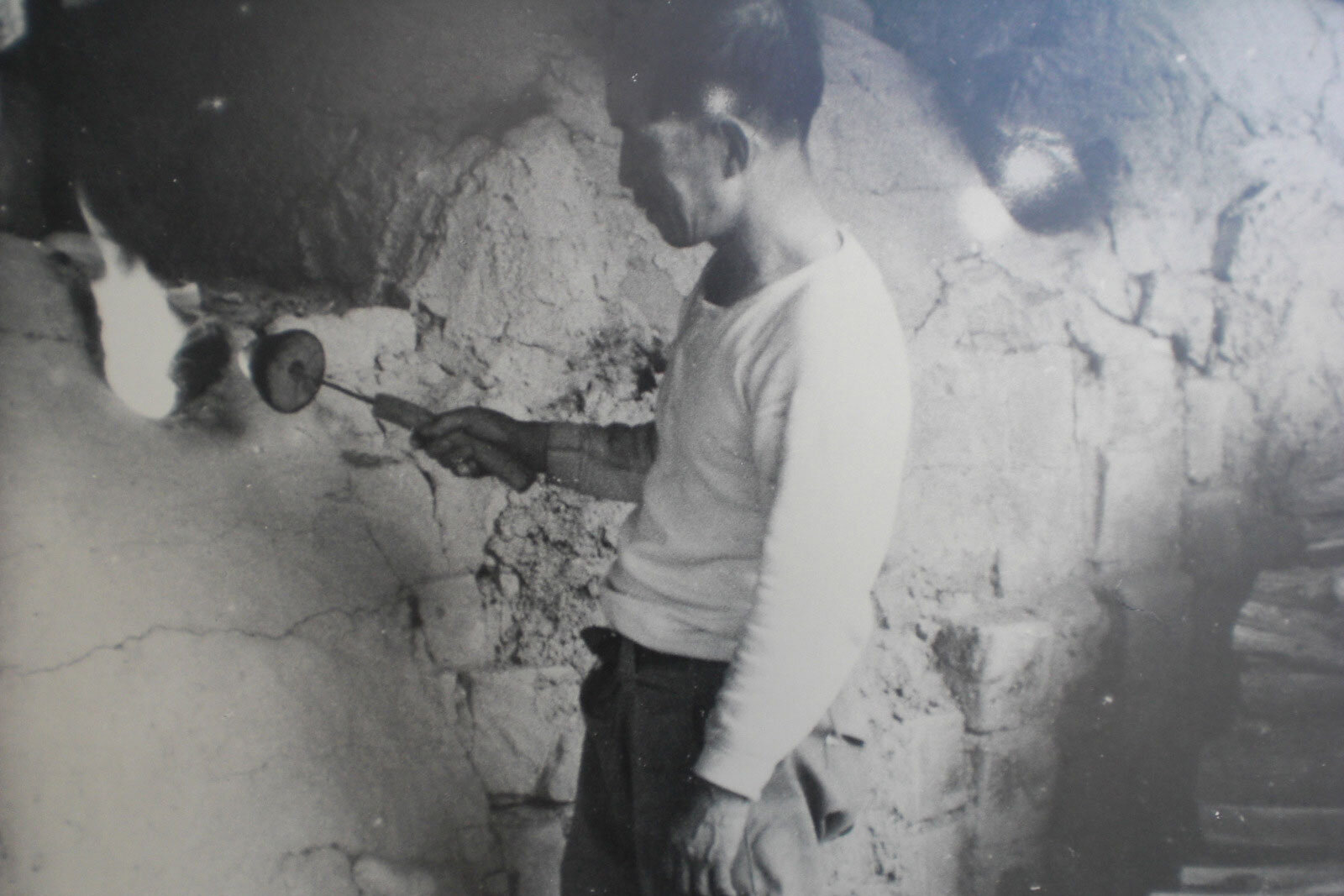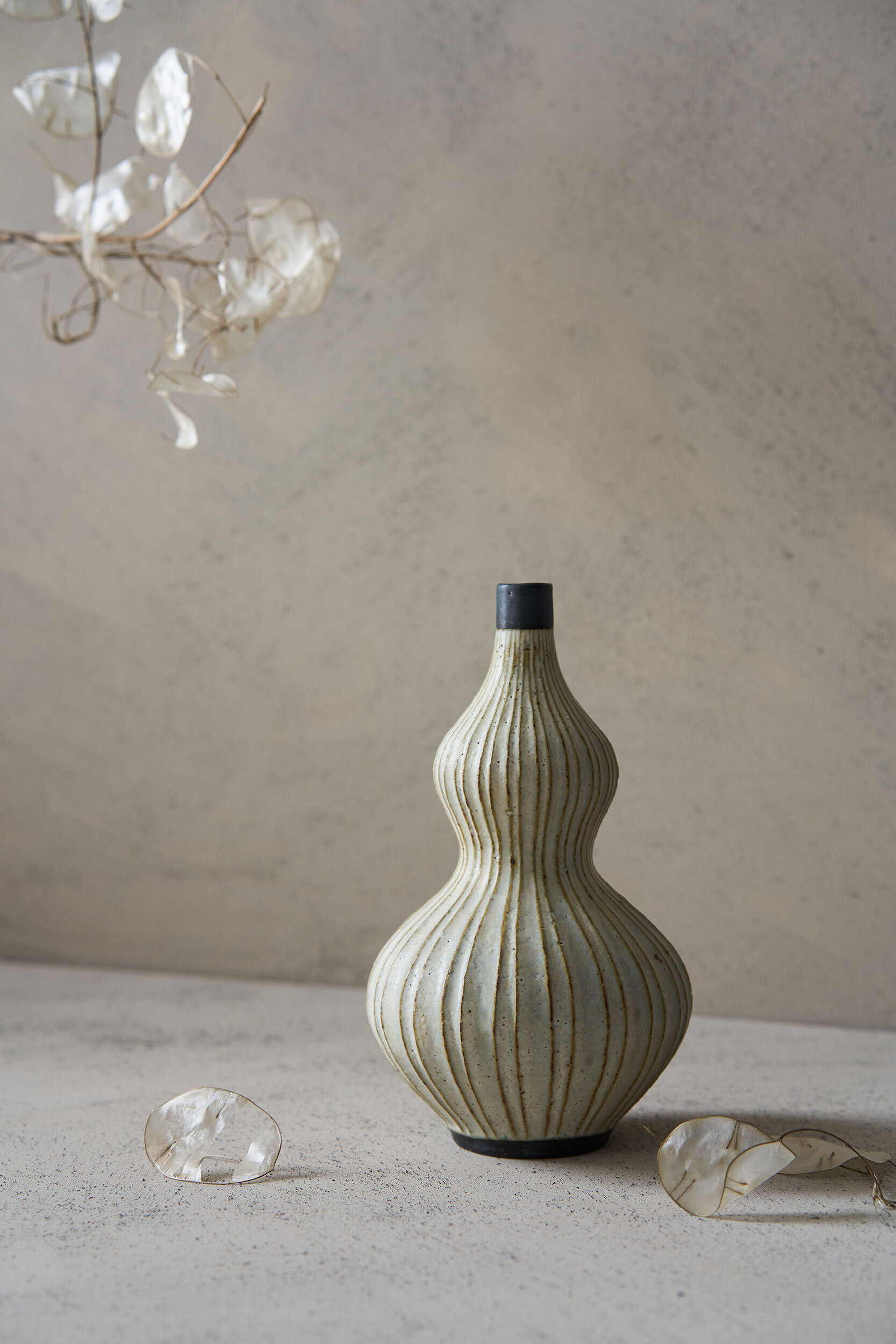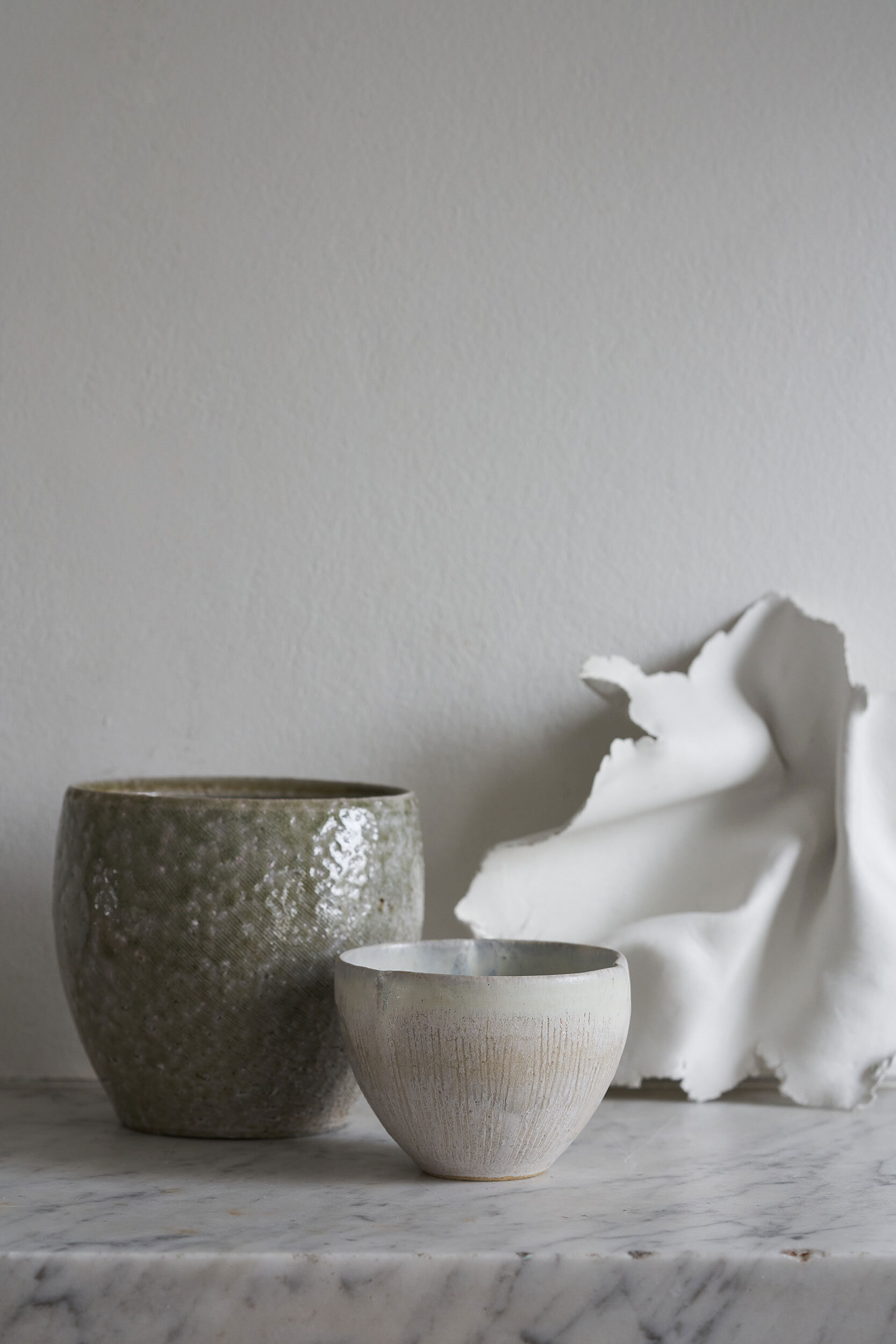A brief history of Kasama-ware
Archive image of Kasama Potters (Image credit: Kasama City Archive)
Kasama-ware: from the An'ei Era to the Shōwa Period
Today’s Kasama-yaki (Kasama-ware) reflects the wealth of modern ceramics made in the region. The origins of Kasama-ware are traceable to Japan’s An'ei Era (1772–1781), in the mid-Edo Period. At that time, Hanuemon Kuno, the head of Hakoda Village (now the city of Kasama), built a kiln in which to fire Hakoda-yaki (the ancestor of Kasama-ware). Kasama-ware was best known for its everyday use, such as earthenware pots and mortars. During the Meiji Period (1868–1912), Kasama was more widely known for the production of rough-hewn kitchenware. It was during the 20th century’s Shōwa Period that things would change. Owing to the depression and WWII, and with the influx of plastic products that followed, the demand for Kasama-ware dramatically decreased. With only a few kilns in operation, Kasama’s pottery industry was on the brink of disappearing.
Hiroyuki Ōnuki and Shinya Take
A focus on individual ceramicists
Initially, Kasama was a place in which potters worked in response to the trends in supply and demand. With a focus on daily, utilitarian wares, it was not recognised as a region for artists. While the craftspeople of Kasama were part of a system that guaranteed work, by the mid-20th century the system was irretrievably broken. In contrast to this, independent and individual ceramicists could work in their personal studios, delivering ceramics to distribution networks—in essence, they could work anywhere. Greatly concerned about the threat to Kasama’s pottery industry, Ibaraki Prefecture and the city of Kasama made the decision to invite individual ceramicists to base themselves in Kasama.
Mamoru Teramoto and Archive image of Kasama Potters (Image credit: Kasama City Archive)
Kasama-ware: from 1950 to the present-day
To promote pottery-making and revitalise Kasama as a ceramics region, the Ibaraki Pottery Training Centre was founded in 1950. At this time, work was undertaken by the centre to educate future artisans, and to conduct ceramic glaze refinement and soil research. With the establishment of pottery associations, the creation of an art village (in 1966), and the completion of a housing development for potters (in 1972), Kasama successfully navigated its way through a period of flux. By attracting many potters to the region, alongside other artisans, Kasama would become a fully fledged producer of pottery. The neriage technique, used by Kōsei Matsui (designated a Living National Treasure) and involving the overlaying of different coloured clays, had a role in elevating Kasama’s pottery to the level of art.
In 1982, Kasama enjoyed its first annual pottery festival. The event, called Himatsuri, has had a major influence on the image of modern-day Kasama. When ceramicists relocated to Kasama, they had the freedom to base themselves in studios across the region. The pottery festival was an opportunity to come together in one place, displaying wares for professional buyers and consumers alike. The festival is an important showcase for Kasama-ware and its eclectic mix of ceramic styles. Moreover, it provides an incentive for new generations of ceramicists to base themselves in Kasama.
In 1992, Kasama-ware was recognised by Japan’s national government as a Japanese Traditional Craft. In 1998, Crafthills Kasama opened for business, offering visitors the hands-on experience of creating their own pottery pieces. In 2000, the Ibaraki Ceramic Art Museum opened—it was the first prefectural art museum that specialised in ceramics in eastern Japan. In 2016, the Ibaraki Pottery Training Centre was renamed Kasama College of Ceramic Art, becoming an educational and research establishment. By focusing on the next generation of potters, the college works to enhance technical capacity, artistry, and production quality, and to further establish the Kasama-ware brand.
Archive image of Kasama Potters (Image credit: Kasama City Archive)
The development of Kasama-ware post 1950 can be subdivided by period and stylistic movement, with examples of potters:
First generation (1950s–60s): a traditional generation, including works by Kōji Arata and Motohiko Itō.
Second generation (1970s–80s): traditions were mixed with foreign artistic influences of the time, including works by Mamoru Teramoto, Kazuo Yamaji, and Takao Nakamura.
Third generation (late 1980s–90s): aspirations were contemporary in style, including works by Nobuhiro Hashiguchi, Akio Nukaga, Saori Shimazaki, Yasuharu Morikawa, Hiroyuki Ōnuki, and Graham McAlister.
Fourth generation (2000s): the ‘Heisei 10s style’, including works by artists such as Makiko Suzuki, Saori Yamazaki, Kimiaki Morita, Minako Takizawa, Miyuki Machida, Mishio Suzuki, and Yūko Hiramatsu.
Fifth generation (2010s): the ’Heisei 10s style’ new generation, including works by Shintaro Abe and Marumi Kujirai.
Akio Nukaga, Shuji Haneishi and Mishio Suzuki
A journey of discovery
In many ways, Kasama has been on a journey of discovery: from its more traditional ceramic styles to the development of completely new styles in ceramics in the 2000s, it has become a remarkable pottery region. Kasama’s tableware ceramicists, makers of objets d’art, artists competing for major national prizes, and practitioners in modern ceramic art on an international stage, are actively bringing a new focus to the region.
In the period from 1950 onward, there was never a clear image, sense of direction, or specific format for Kasama-ware. On the contrary, when producing works, Kasama’s potters have had the freedom to follow and express their own aesthetic values, ideas, and intentions. This freedom is an essential quality of Kasama-ware.
With thanks to Kenji Kaneko, Director of Ibaraki Ceramic Art Museum, for his input.
